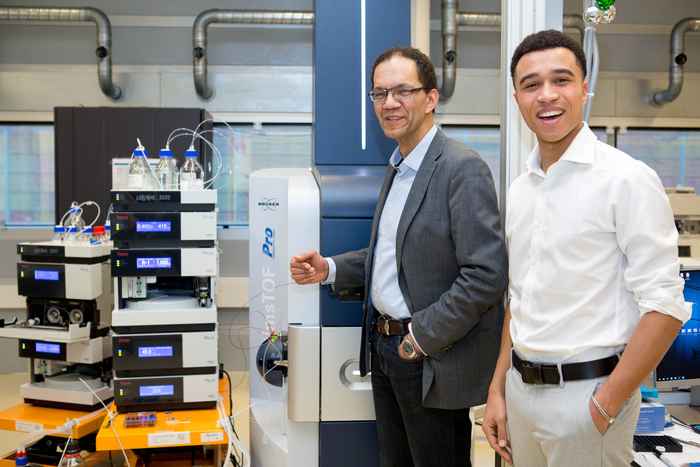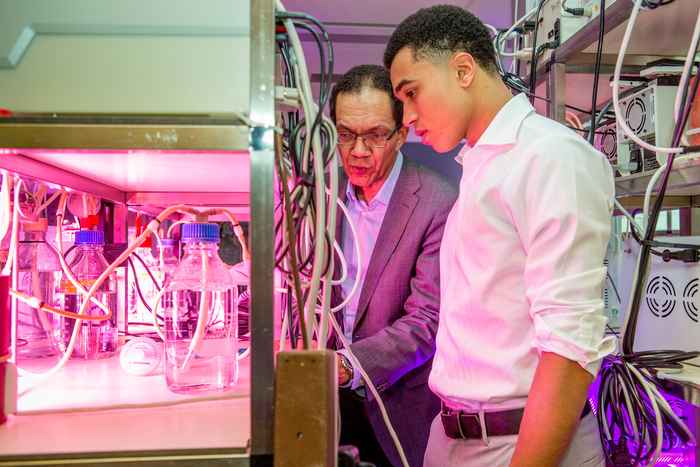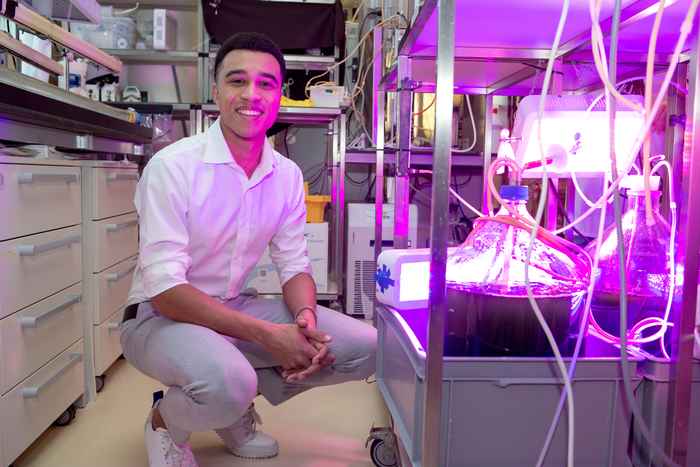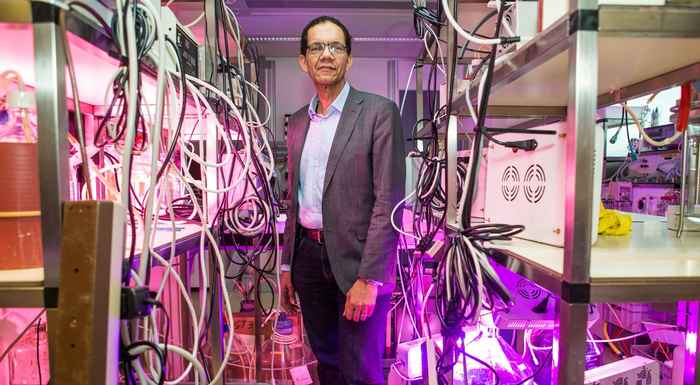20 years Faculty of Science: the past, present and future of Biomedical Sciences
The cell used to be something you could only study from the outside. Nowadays, we are increasingly able to study live processes within cells.
24 January 2020
Text: Edda Heinsman. Photography: Liesbeth Dingemans
Everything is just as you would expect at a high-tech biological laboratory, and more advanced than the facilities 20 years ago, says molecular biologist Stanley Brul. However, he adds that we need to move a floor further down to see the best things of all. So down the stairs we go, through a few long corridors. A door opens and there it is: the timsTOF-Pro, a two-metres-long machine of gleaming metal, the absolute state of the art in biochemical research.

Master’s student Delano Sanches is visibly impressed: ‘Of course, I’ve had lectures about this machine, so I know how it works and what it can do, but I’ve never worked with it. I had no idea it was this big. Wow!’ What can this piece of equipment do? Professor Brul explains that the machine is used to view proteins. Mapping DNA was already possible 20 years ago. ‘After ten years of preparatory work, scientists managed to chart the entire human genome – 3 billion pieces. These days, that’s an afternoon’s work,’ says Brul. ‘Although the genome is referred to as the blueprint of life, it’s not a workable construction plan. In order to understand the whole building, you need to know how the blocks are stacked, how the proteins are structured.’ And that is what this steel beast does: it not only reveals what elements are used to structure material, but also indicates how these fit together.


Brul continues: ‘Cells used to be something you could only study from the outside. You could describe them, draw them. The Latin names for bacteria are based on how they look: spirillus – with a spiral shape, bacillus – looking like a little rod, subtillis – not very big. But when it came to the contents of these cells, we were in the dark. Now, we are increasingly able to view the processes actually taking place inside cells.’ Sanches takes up the story: ‘Many medicines are taken on a purely symptomatic basis: someone tried something out once and it seemed to work. Nevertheless, we don’t know what the underlying mechanisms are, how the drug actually does what it does. Proteins form the core of this type of process and are an essential aspect of understanding how cells work.’ This is important: knowing more about cells is important for a wide range of applications – like new medicines, but also for instance in the fields of food safety and biological pesticides.
Reference work
It is not only the research field that has made progress over the last 20 years – quite a few things have happened in teaching as well. To give one example, students are increasingly free to learn in their own way. ‘Lectures are recorded, which is very useful for checking things afterwards,’ Sanches enthuses. ‘Nowadays I don’t use books for learning, except as reference works.’ Brul, recently appointed programme director at the College of Life Sciences, produces the bulky tome Molecular Biology of the Cell. ‘You need a certain amount of basic knowledge, but it’s impossible to know everything. I don’t know this entire book by heart, either. Things are developing amazingly fast. Everyone is becoming more and more specialised, which is why it’s so important for the various specialist fields to keep in touch with each other.’

Indeed, Brul sees effective communication between specialists as one of the major challenges in the field over the next 20 years, in addition to dealing with huge amounts of data. ‘There’s an increasing shift towards personalised medicine, which requires a lot of computing power.’ Brul points outside, towards the big data storage centre and SURFsara. ‘That’s the biggest European hub for bioinformatics. This partnership with the commercial sector and information science is a real advantage of the Science Park. Setting all this up at the Science Park presented something of a challenge, but eventually it turned out very nicely indeed, which is something we can be really proud of. After 20 years, the Faculty of Science certainly deserves to be celebrated.’
Also read
- 20 years Faculty of Science: the past, present and future of Artificial Intelligence
- 20 years Faculty of Science: the past, present and future of Biology
Read more information about the Bachelor’s programme Biomedische Wetenschappen and the Master’s programme Biomedical Sciences.
Follow UvA Science on Instagram and Twitter and stay informed of scientific insights and the latest news about the Faculty of Science.